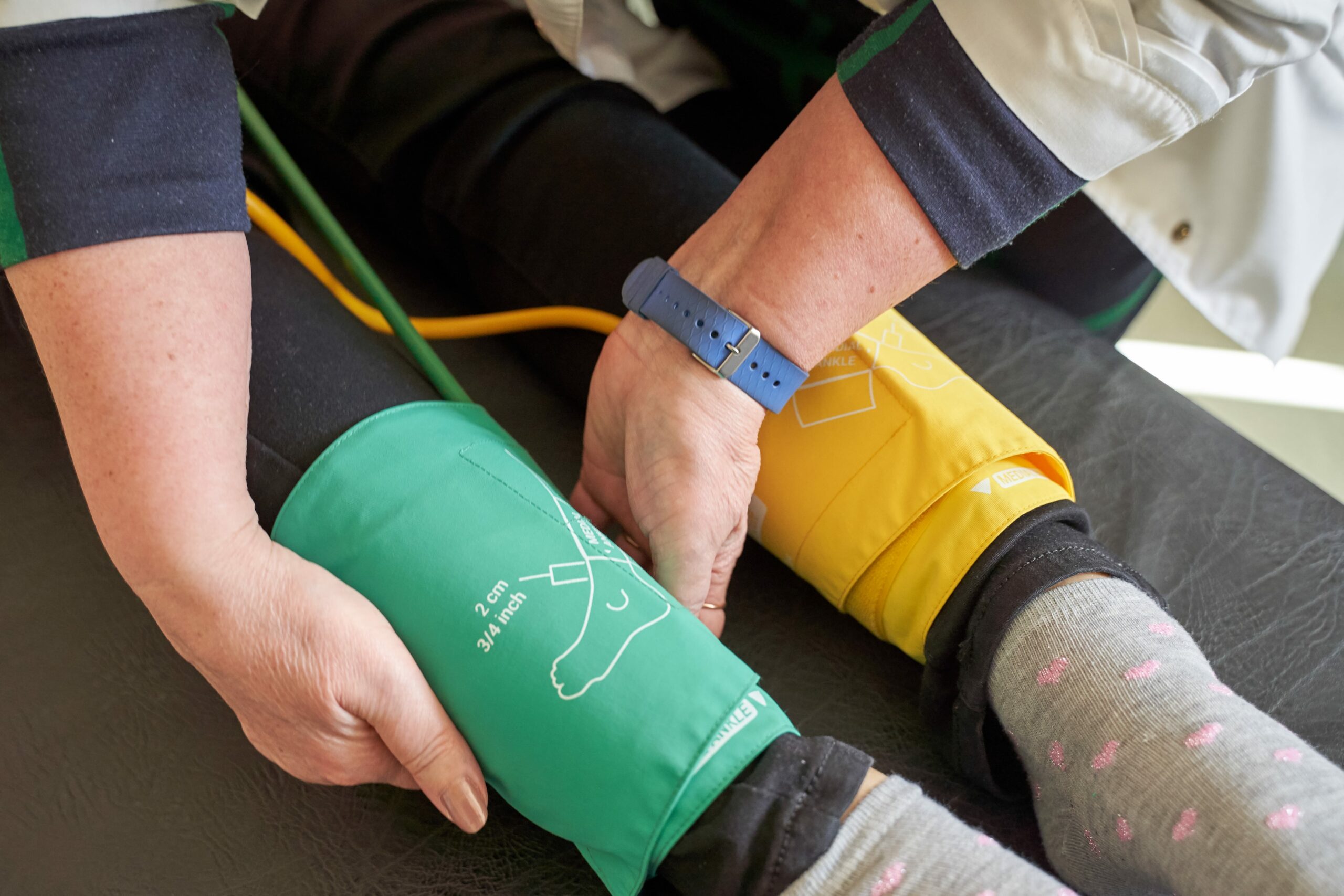
The ankle-brachial index (ABI) test can check whether you have peripheral artery disease (PAD). Here’s more about how ABI testing works and how to request an appointment with The Center for Vascular Care at HCA if you need treatment for PAD.
What Is an ABI Test?
An ABI test is an easy, fast, and noninvasive procedure that can reveal whether you have PAD. PAD occurs when blood flow to the arms and legs is reduced due to having narrow arteries.
The ABI test compares the blood pressure in your ankle with the blood pressure in your arm. This test can show the severity of your PAD and whether your arms and legs are getting sufficient oxygen. It can also help your provider determine whether you are at risk of dying from a heart-related condition.
How Is the ABI Test Performed?
First, you may be asked to rest for up to 30 minutes after arriving for your appointment so the ABI test can produce accurate blood pressure readings. Then, you will lie on your back while your provider uses an inflatable cuff and hand-held ultrasound device to measure the blood pressure in your arms and ankles.
The test takes just a few minutes, and you can resume your usual activities immediately afterward.
What Are the Results?
The results of your ABI test are calculated by dividing the blood pressure in your ankle by the blood pressure in your arm.
A normal ABI is between 1.0 and 1.4. However, an ABI of under 0.9 usually indicates the presence of PAD. Moderate PAD produces an ABI of between 0.4 and 0.7, while severe PAD produces an ABI of under 0.4.
Who Is a Candidate?
You may be a candidate for ABI testing if you are experiencing symptoms of PAD or meet risk factors for PAD.
Common signs and symptoms of PAD in the legs include:
- Pain in the legs during any physical activity
- Muscle weakness
- Hair loss
- Smooth, shiny skin
- Skin that feels cool to the touch
- Reduced or absent pulses in the feet
- Cold and numb sensation in the toes
- Slow-healing sores and ulcers
Risk factors for PAD include:
- Being 65 years of age or older
- Smoking and tobacco use
- Family history of PAD or heart disease
- Lack of exercise
- Stress
- Poor nutrition
- Other medical conditions, including diabetes, obesity, and hypertension
PAD Management at The Center for Vascular Care
The Center for Vascular Care focuses exclusively on patients with cardiac risk factors who are concerned about PAD.
Our specialists are highly familiar with PAD signs and symptoms and can help you avoid a misdiagnosis. We offer a personalized treatment approach for PAD that combines noninvasive, minimally invasive, and surgical interventions. Our goal is to improve your symptoms and quality of life if you are diagnosed with PAD.
Our team at The Center for Vascular Care at HCA provides the resources you need to take control of your heart health. Contact us today at (908) 806-0190 to request a screening appointment and discuss your treatment options and personalized diagnosis with one of our specialists.
